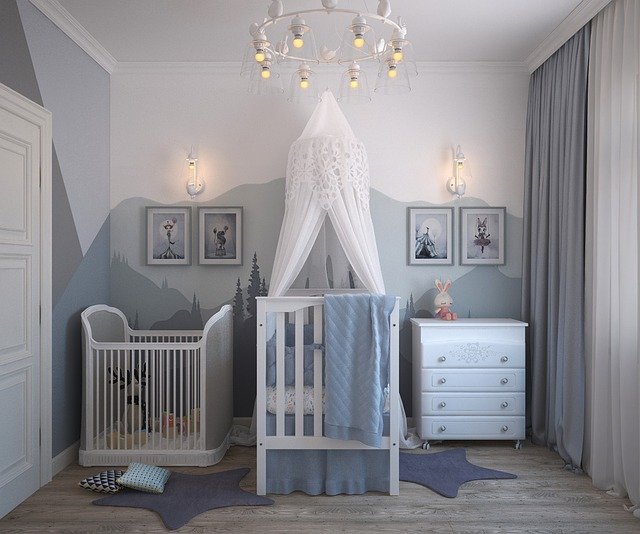Devghara is considered an integral part of Indian spiritual culture. Devghar occupies a small space in the house, but its significance within the household is immense. Particularly, in the case of Devghara, various aspects such as the family member’s investment in the subject, their faith, devotion, and numerous questions related to Devghara are connected to the goddess.
While designing the interior of a house, homeowners often assert their preferences for the living room and kitchen design, tailoring these spaces to their liking. When it comes to the master bedroom, a joint effort is typically made in its design. If there are older children, they may have a say in decorating their bedrooms, or their parents may impose their choices. The decoration of toilets and bathrooms is usually treated with dignity.
However, a key question arises concerning the placement of Devghar: why is the same thinking power not applied? Once the interior design is complete, any remaining corner is often designated for the placement of a deity. God, being silent and undemanding, does not specify where to be situated—whether here or there. It’s worth noting that, practically speaking, it might not matter where God is placed, but it can make a difference.
When considering the square footage of your house, the optimal or primary position for Devghar is in the northeast direction. Following that, the North-North-East or East-North-East positions become crucial. However, these are not the only options available. Additionally, East and North are both suitable for Devghar. In summary, if the northeast is not feasible, the East or North is a suitable location for Devghar. (Temple Positions) The best position is NE/N/E.
When examining the books of Vastu Shastra or studying the methodologies employed by Vastu experts worldwide, one may observe that they do not assign significant importance to Devghara. The foremost consideration is that the Devghar should be situated in the North-East direction. In Vastu Shastra, North East, composed of ‘Ish’ (God) + ‘Anya’ (Other), signifies the position of God. The names assigned to directions in Vastu Shastra hold relevance and importance, and the meaning of each direction can be gleaned from its name.
For instance, the North East direction is where the divine principle resides. It is the answer direction, signifying that every question has an answer. The best place for the Devghara appears in the directional meaning as East-Pre-Half-North. This northeast direction should be observed for the entire house, emphasizing the cultural significance of the northeast corner of the entire house.
People in rural areas often may not quickly identify the North East direction. If an old or uneducated woman is instructed to place the house of God in the northeast direction, she might find it challenging to understand. In such cases, standing in the centre of your house and extending your hands in a straight line can help determine the north direction. This means placing your Puja house in the middle of the North and East directions. If the middle direction is not clear, then from the straight line of the nose to the left hand, east-north-east is north. The Devghar should be situated in any of these areas.
In the case of my colleague, a man who didn’t believe in God and didn’t go to the temple, transformed training with me. He moved his Devghar in the northeast direction, and a miracle occurred—his pending problems were resolved. His life improved since he shifted his north-west facing Devghar to the north-east direction. He started performing pooja and Japa, and from there, his faith became more settled and strong.
Vastu Shastra states that Devghar should not be placed in the kitchen or bedroom. The rationale behind this recommendation is to observe the behavior of women in the kitchen from the perspective of maintaining the sanctity of the temple. Additionally, the kitchen’s proximity to the Devghara should be carefully considered, especially in households where non-vegetarian food is consumed.
According to Vastu Shastra, the Devghar and the bedroom should not be adjacent. Similarly, the bedroom, dressing room, and prayer room should not share the same space. A kitchen and the temple should also be kept separate. However, if the kitchen is already in the northeast direction of the house based on its design and cannot be changed, placing the Devghar is not an option. In such cases, it becomes crucial to coordinate between the kitchen’s internal design and the temple’s location.
Since both are situated close, maintaining the sanctity of the Devghar when placed in the kitchen is important. It is advisable to be mindful of where the Devghar is kept in the kitchen. Some individuals even set up shrines on the fridge, allowing for inadvertent touches while opening it without compromising sanctity. Moreover, it is disheartening to observe Gods placed in a corner or below in a seemingly neglected manner in some houses. Gods deserve more reverence; they should not be overlooked or ignored.
According to Brahma Tattva, Devghar should not be located in the North-East. Why it should not come or what are its consequences is related to Pitro Dosha. Apart from the Brahma Tattva area, you can keep the Devghar in the Northeast-North-East area. While placing the Devghar, the face should be towards the North-East, East, or North. If the house of God is placed in the North-East, the face of God will be in the North-North-East-South-East, keep it in East-North-East. God’s face will be in the North-West, if Devghar is placed in the East, God’s face will be in the West, but if Devghar is in the North, God’s face will be in the South.
But partially informed architects give wrong information. Some try to mislead and pretend that God’s face is in the South. Many people have made the South a bad planet. Admittedly South is a bad direction. P is not so bad as to make him a brother. It does not matter much if God faces south. Because many people have been misled about this. Well, if there is no space anywhere, make a partition in the north-facing wall and make the face of God north-west and the opposite person will also get mental satisfaction.
Nowadays, many people question whether the Devghar should be placed on the floor or hung on the wall. If you have a spacious house and can set up a proper temple on the ground, it is advisable. Ideally, create a chaurang or chauthra about 1 to 1.5 feet above the ground and place the Devghar on it. This ensures that you are face-to-face when saluting or worshiping God, with your head bowed in reverence.
We have a multitude of Gods, diverse worship practices, and a rich tapestry of customs and traditions in India. It is a country where people of various castes and religions coexist. Rituals, customs, and traditions change every 15 miles, leading to distinct concepts of God in regions like Vidarbha, West Maharashtra, Konkan, and Khandesh. The linguistic landscape also evolves over short distances.
When discussions arise about the worship of God and the methods involved, superiority debates emerge based on customs. My stance on Devpooja and Shraddha is that one should follow their customs and methods. The philosophy of Indian spirituality exhibits greater flexibility compared to global spiritual philosophies. Naamsmarana, the remembrance of God, holds significant importance in Indian spirituality.
The emphasis lies not just on the act of worship but on the intimacy and depth of one’s connection with the divine. The quantity of devotion, or Bhakti, is considered less important than the quality of it. The open-minded remembrance of God takes precedence in Indian spiritual philosophy.




